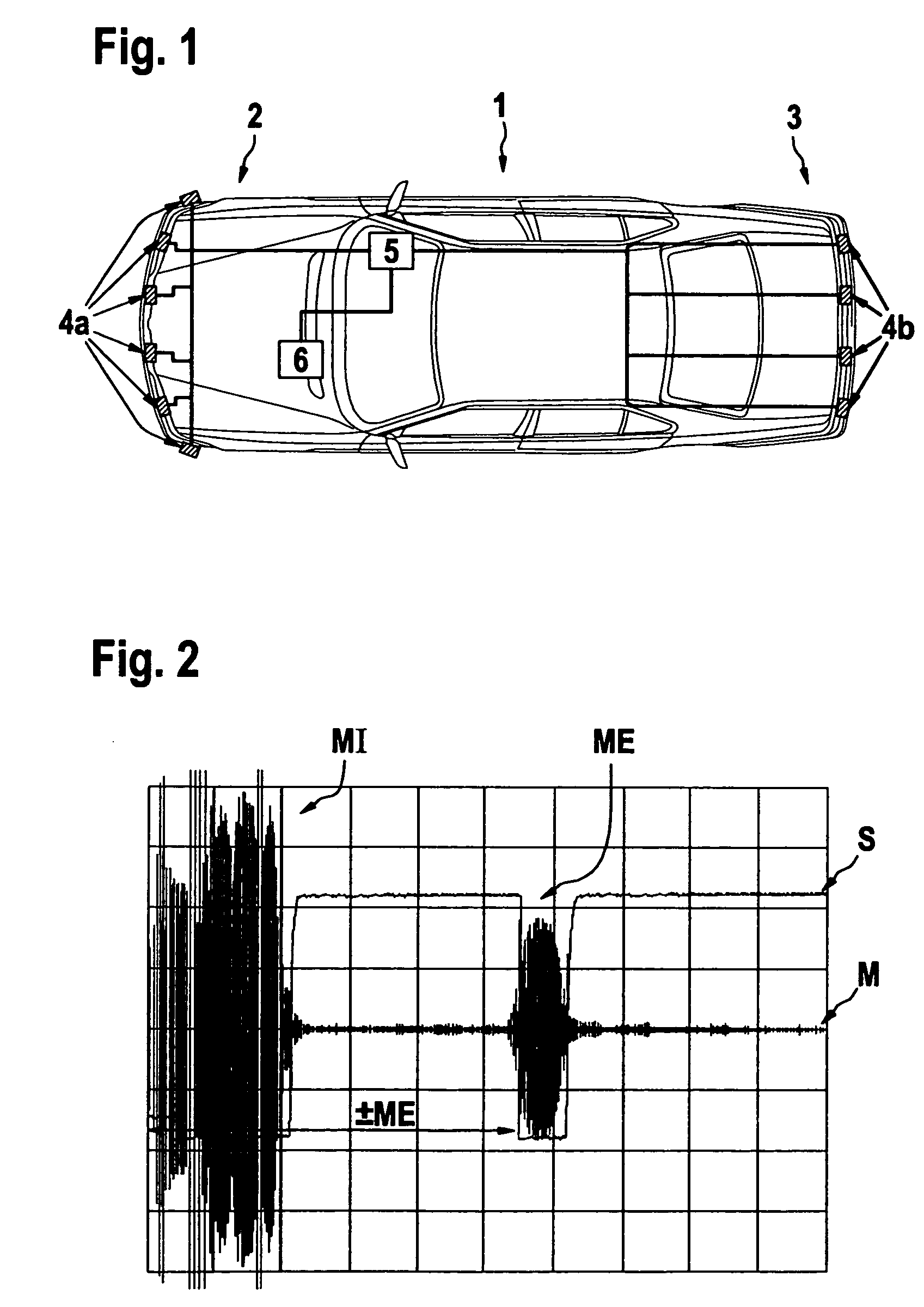Method for measuring distance and measuring device for it
- Summary
- Abstract
- Description
- Claims
- Application Information
AI Technical Summary
Benefits of technology
Problems solved by technology
Method used
Image
Examples
Embodiment Construction
[0039] In FIG. 1, a top view of a motor vehicle 1 is shown. At the front end 2 and at the rear end 3, a plurality of distance (e.g., ultrasound sensors) sensors 4 (4a designating the sensors in the front, and 4b designating the sensors in the rear) are built into the bumper, each of which sensors has an emitter for emitting measuring pulses MI and a receptor for receiving measuring pulse echos ME. Distance sensors 4a and 4b are connected to a control and evaluation unit 5, which, on its part, may be connected to a central vehicle control unit 6 via a bus system, such as a CAN bus. Control and evaluation unit 5 is used for activating distance sensors 4a and 4b, and for evaluating the received measuring signals for determining the distance from possible obstacles, and for transmitting the distance information to an optical or acoustical indicator system, e.g., via the CAN bus and the central control unit 6.
[0040] In FIG. 2, an example chart of a measuring signal M (having components ...
PUM
 Login to View More
Login to View More Abstract
Description
Claims
Application Information
 Login to View More
Login to View More - R&D
- Intellectual Property
- Life Sciences
- Materials
- Tech Scout
- Unparalleled Data Quality
- Higher Quality Content
- 60% Fewer Hallucinations
Browse by: Latest US Patents, China's latest patents, Technical Efficacy Thesaurus, Application Domain, Technology Topic, Popular Technical Reports.
© 2025 PatSnap. All rights reserved.Legal|Privacy policy|Modern Slavery Act Transparency Statement|Sitemap|About US| Contact US: help@patsnap.com



